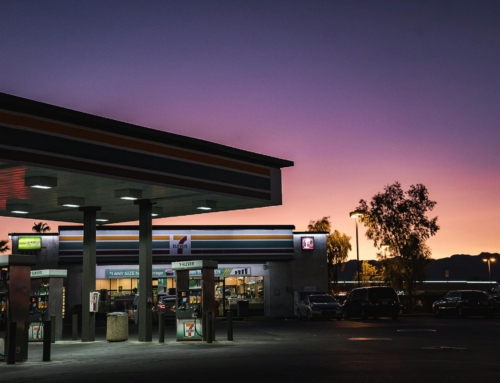Right now is the ideal time to re-examine your loyalty program and maximize its impact. Not only does this help to keep your program fresh and engaging, but you’ll likely remove some hurdles and make improvements for your broader customer base as well.
Here are five actionable strategies you can leverage today to optimize your program:
1. Make sure you’ve eliminated friction points in all interactions.
We’ve all been there. You’re standing in the checkout line and pull out your phone so your loyalty card can be scanned, only to find you need to log in. After three failed password attempts, you consider whether to begin the reset process, but ultimately decide it’s not worth the glares and loud sighs you’re receiving from the customers in line behind you.
The ecommerce equivalent is much higher. According to Statista, roughly 88% of carts where abandoned in March 2020. Don’t let your loyalty program contribute to this statistic.
Are your team members good about engaging your guests? Nothing is more frustrating than to leave a restaurant or retailer, only to remember that no one asked you if you were in the loyalty program, let alone took your info to give you credit for the purchase. Yes, there are always alternative ways to get credit (log into the website and enter your purchase information, etc.), but how many people actually do it?
Interact with your program through the lens of a program member: how easy is it to identify yourself as a program member? Is the reward redemption process simple? Identify any stumbling blocks and take steps to remove or improve upon those experiences.
2. Understand the customer journey by using personas.
Take strategy #1 to the next level by layering in personas.
Personas bring your customer segmentation to life and enable you to look at customers as individuals. Personas also help you to focus on which customers are the most valuable, which is also where your loyalty and retention efforts should be focused. What program benefits, experiences and rewards would better serve your most valuable customers?
If you don’t have personas developed, use the data you already have – historical survey response data and customer satisfaction scores are great places to start. Creating personas doesn’t have to be a hard or months-long process either. Just start with the 2-3 main types of customers you know you have. If you sell nutritional supplements, for instance, you likely have a homeopathic/healthy eating customer, a fitness-minded/heavy exerciser customer, and a customer who wants the basics covered—a good vitamin, a probiotic and maybe a few other products to round out her regime. Think about what each customer needs from you, then look hard at your signage, your counter displays, how you showcase products from the customer perspective and make sure you’ve got the basics nailed.
3. Make sure your rewards are relevant
While you’re looking at your program from the perspective of each persona, consider whether it’s time for a rewards refresh. An alarming 43 percent of consumers have stopped engaging with a retailer’s loyalty program because it didn’t offer valuable rewards. 
Which rewards are the most popular amongst your top customers? Are there some rewards members just seem to always overlook? One of the biggest trends in loyalty rewards right now is giving members the opportunity to redeem their points for a straight-up discount on their purchases. Direct value is very in vogue right now. Sephora recently added a new benefit to their program called Beauty Insider Cash where members can redeem points for dollars off of their purchase.
When considering whether to enroll in a loyalty program, customers envision themselves earning rewards. Are those rewards worth consolidating their spend with you? Are they enticing enough to share their personal information and make the effort to track their progress through the program? Are they achievable? Rewards that take forever to earn are almost a disincentive. If you’re seeing a high rate of earned rewards but low redemptions, it may be time to take another look at your selection.
4. Make sure it’s about real interactions, not about spend.
Your most valuable and most loyal customers tend to self-select into loyalty programs. Every program has members who are just looking for a good deal, but most customers participate in a program because they choose you over your competitors and want to be rewarded for their loyalty.
These members chose your brand for a reason – remind them of those reasons, and remember that every email shouldn’t be promotional in nature. Take stock of the communications members are receiving and ensure the core message is providing value to the customer. Are loyalty members rating their customer service experiences as satisfactory or above? Don’t be afraid to send a straight-up thank you for the last purchase or visit. Many companies are loathe to “waste” a customer touch on a communication with no promotional value, but it’s never a waste when you reinforce the notion that you recognize that this is a relationship of choice, not obligation.
Purchases and spend are important, but all the other non-transactional interactions a customer has with your brand will determine whether they choose to purchase again.
5. Ask members what they want.
Typical inside-out thinking means you may be relying on a set of predetermined strategies from last year. It’s a new day!
Where many used to focus on discovery and variety, it’s now about safety. Find out what members NEED from you, not what you want to give them.
Make it easy for members to provide feedback, whether through a timely post-purchase survey, an email to members asking for their input, or gathering information relayed to employees. Look for recurring themes that you can translate into new program elements or updates.
Use this time to re-examine the finer details of your loyalty program. Take a closer look at rewards and customer interactions from the perspectives of your best customers and members.
Make it easy to do business with you. Ensure your rewards and interactions are authentic and relevant not just to this pivotal point in retail, but also to your customer as an individual.
I think you’ll be amazed at the impact of small improvements and adjustments.










Leave A Comment